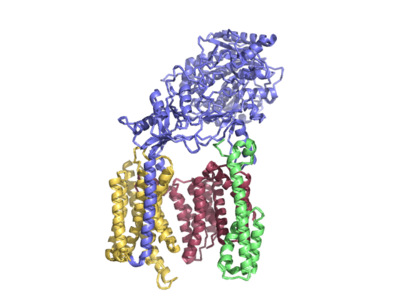Gamma Secretase
Introduction
5A63 Article
Background
Gamma Secretase is a transmembrane aspartate protease
Catalyzes peptide bond hydrolysis of type I integral membrane proteins
Such as Notch, APP, and various other substrates
3 residue segments; allow binding and cleavage
Generates amyloid-β (Aβ)
Important for neural processes
Implications with Alzheimer’s disease (AD)
Drug target
GS inhibitors
Dangerous side effects
Overall Structure
20 transmembrane components (TMs)
4 subunits
Nicastran (NCT),Anterior pharynx-defective 1 (APH-1), Presenilin (PS1), Presenilin enhancer 2 (PEN-2), and4 phosphatidylcholines stabilize structure (interface between PS1 and PEN-2; APH-1 and PS1; APH-1 and NCT)
practice
Structural highlights
Substrate Structure
Lid Complex
Active Site
Relevance and Disease
APP build up leads to Amyloid plaques in brain
Inhibition of γ-secretase could be potential AD treatment
Location of majority of mutations
Over 200 mutations that cause AD
AD mutations heavily target interface between PS1 and APP
Important to look at differences between substrates
This is a sample scene created with SAT to by Group, and another to make of the protein. You can make your own scenes on SAT starting from scratch or loading and editing one of these sample scenes.

